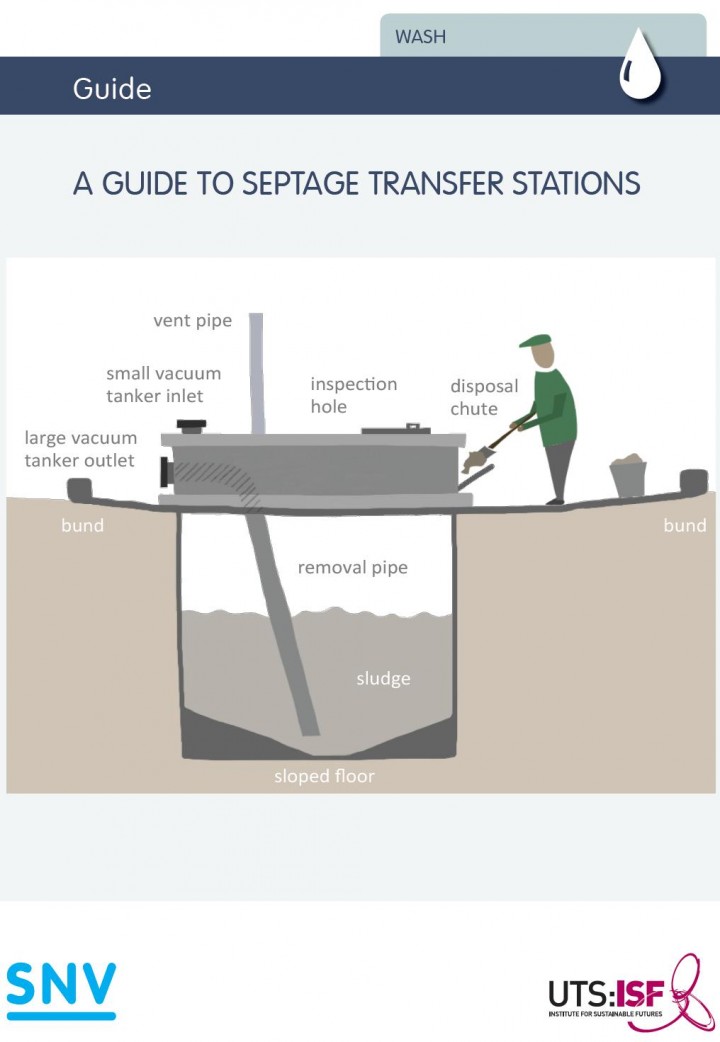A guide to septage transfer stations ISF-UTS, SNV (2016)
Septage transfer stations have the potential to significantly reduce the amount of faecal sludge entering the environment by providing a local solution for septage disposal. Localised transfer stations shorten the time required for local operators to collect and transport septage, and they will be able to use smaller vacuum tanks that can navigate the densely populated residential areas. This guide provides information on the salient aspects of selecting, designing, building, operating and maintaining a septage transfer station.
Bibliographic information
ISF-UTS, SNV (2016). A guide to septage transfer stations Institute for Sustainable Futures - University of Technology, Sydney
Filter / Tags
Faecal sludge treatment processesGuidelines and manualsEnglish
External links

Published in: 2016
Pages: 26
Publisher:
Institute for Sustainable Futures - University of Technology, Sydney
Author(s):
ISF-UTS, SNV
Uploaded by:
ISF-UTS
Institute for Sustainable Futures - University of Technology Sydney
